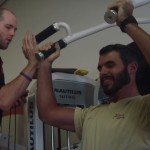- The Wellness Tree1480 Beltress St, Suite 5
Dunedin, FL 34698727-216-6929 Call for appointments & information
- Testimonials
I went to get acupressure because I was past my pregnacy due date, but after the appointment I felt like I was walking on air. I had a lot of energy, my pains were gone, and I realized I needed it more than I really knew. She is understanding and very professional. I would definitely recommend Dr. Graves.
-S.S
Dr. Carrie Johnson is what all physicians should be–knowledgeable, concerned, and caring. She listened and worked with me as an individual. She took me from a life of fear of exacerbating the already constant pain to a life where I can be physically active because the pain can be eliminated by her skilled treatment. Not only did she provide healing with accupuncture to relieve TMJ and radiating nerve pain, she also taught me two simple exercises that extend the effect
... Read more »I am a sr citizen and have been going to Dr. Carrie for a year and am hooked on acupuncture!! She helped me with losing weight and lowering my blood pressure. A great way to stay well and maybe someday all insurance carriers will see to it to cover acupuncture as a medical treatment.
I am a fitness freak: I like cross-country running,cycling, weight lifting, playing basketball and racquetball. But at a certain point I started having severe back pains, spasms and hamstring tightening which sidelined me for quite a while as I tried physical therapy but I did not get immediate relief I was looking for. Then I visited with Dr Carrie Johnson for initial visit and analysis of my condition, at first I was skeptical but Dr Carrie Johnson made me a believer of Acupuncture and Active release techniques. Thanks
... Read more »Let me start by saying I am a certified CrossFit trainer with multiple specialty certifications and I am also a USAW certified Sport Performance Coach. I have dealt with minor injuries before but nothing that forced me to consider some type of rehab or treatment plan. While training high volume or a competition I suffered a low back injury. After months of rest and self prescribed rehab I wasn’t getting back to the shape I wanted and my symptoms persisted.
... Read more » -
Latest Articles:
- • Spring Clean Your Way to Better Health •
- • 5 Healthy Ways to Embrace the Spring Season •
- • Fun Things to do this Spring •
Uncategorized
The Mind-Body Connection: Understanding Anxiety and How Acupuncture Can Help

Anxiety can often feel like a tumultuous storm raging within us, manifesting as a racing heart, a churning stomach, and a sense of impending doom. While our brains significantly generate fear and anxiety, there’s a profound connection between our minds and bodies. In this article, we’ll explore the neuroscience and physiology of fear, as explained by psychiatrist and neuroscientist Arash Javanbakht, and discuss how acupuncture can be a valuable treatment modality in managing anxiety.
Fear and the Brain
Dr. Javanbakht delves into the intricate workings of the brain when it comes to processing fear. He highlights that the amygdala, a small almond-shaped region, plays a crucial role in determining the emotional relevance of a situation and how to respond to it. When we perceive something as dangerous, the amygdala rapidly triggers physical responses, often bypassing logical thinking. This primitive response system was essential for early humans facing immediate threats like predators.
The hippocampus, closely connected to the amygdala, helps us contextualize fear. It differentiates between actual dangers, like encountering a lion in the wild, and perceived threats, such as seeing the same lion in a zoo. The prefrontal cortex, on the other hand, manages the cognitive and social aspects of fear, sometimes even instilling fear based on social influences.
Fear and the Rest of the Body
When our brain perceives a situation as threatening, it sets off a cascade of neuronal and hormonal reactions that prepare us for action. While some aspects of the fight-or-flight response occur in the brain, most happen in the body.
The brain’s motor cortex sends rapid signals to our muscles, including those in our chest and stomach, to prepare for quick, forceful movements. These signals can result in feelings of tightness in these areas. The sympathetic nervous system, often referred to as the “gas pedal” of fight-or-flight, increases the heart rate and dilates airways. These responses lead to sensations like a racing heart and shortness of breath. Digestion slows down as blood flow redirects to more vital organs.
The Brain-Body Connection
All these bodily sensations, including those felt in the chest and stomach, are communicated to the brain through spinal cord pathways. Our anxious brain processes these signals both consciously and unconsciously. The insula and the prefrontal cortex, responsible for conscious awareness and labeling of emotions and bodily sensations, can inadvertently contribute to a loop of increasing anxiety.
Acupuncture as a Treatment Modality
So, if anxiety originates in the brain but is profoundly felt throughout the body, how can we effectively manage it? One holistic approach that has gained recognition is acupuncture. Acupuncture is an ancient Chinese practice that involves inserting thin needles into specific points on the body to restore balance and promote healing.
Acupuncture’s effectiveness in treating anxiety is its ability to modulate the body’s stress response. When strategically placed acupuncture needles stimulate the body’s nervous system, triggering the release of endorphins and other neurochemicals that promote relaxation and reduce stress.
Moreover, acupuncture can help rebalance the autonomic nervous system, including the sympathetic and parasympathetic branches. By calming the sympathetic nervous system (the “fight-or-flight” response) and enhancing the parasympathetic nervous system (the “rest-and-digest” response), acupuncture can alleviate anxiety-related physical symptoms such as a racing heart, muscle tension, and digestive discomfort.
Acupuncture also addresses the mind-body connection by promoting mindfulness and relaxation during sessions. This can help individuals become more aware of their bodily sensations and emotions, allowing them to break free from the anxiety loop.
Anxiety often takes center stage in the intricate dance between our brains and bodies. Understanding the neuroscience and physiology behind fear is essential in managing anxiety effectively. Acupuncture emerges as a valuable treatment modality that can help rebalance the mind-body connection, reduce physical symptoms of anxiety, and promote relaxation. By combining ancient wisdom with modern science, individuals struggling with anxiety can find relief and reclaim their sense of calm and well-being.
References:
Javanbakht, A. (2023, September 5). If anxiety is in my brain, why is my heart pounding? A psychiatrist explains the neuroscience and physiology of fear. The Conversation. http://theconversation.com/if-anxiety-is-in-my-brain-why-is-my-heart-pounding-a-psychiatrist-explains-the-neuroscience-and-physiology-of-fear-210871
Resource Books:
Afraid: Understanding the Purpose of Fear and Harnessing the Power of Anxiety
ARASH JAVANBAKHT, MD
Behave: The Biology of Humans at our Best and Worse
ROBERT M. SAPOLSKY
Healthy Foods for Fall

The season of fall brings cooler weather and shorter days. As with any season, the world adjusts accordingly. Plants begin to go dormant, animals begin scrounging for food to store to get them through the upcoming winter months and humans start winterizing everything.
As fall descends on the land, it reminds us we need to start cutting back on the numerous cooling foods that are consumed during the summer months. Things like raw foods, salads, juices and fruits should be decreased because they can create too much cold in the body, according to traditional Chinese medicine. continue reading
Five Reasons to Get Acupuncture for Low Back Pain

Statistics show eight out of 10 people will experience low back pain at some point during their life. Seeking medical treatment for back pain is very common. Typically back pain is fleeting and can be easily resolved with rest, heat and an occasional anti-inflammatory like ibuprofen. However, once the damage is done, the recurrence of back pain can be as high as 50 percent. Part of this is because as we age, things like muscles and tendons become less flexible and pliable. It is also very well known in the United States, people are too sedentary and this leads to excess weight gain that can create added pressure on the body, especially the low back. continue reading
How To Get The Most From Your Training Program – Part 2
Verbiage:
In our last post, we talked about the importance of committing to attending your scheduled workouts (on time!) consistently in order to get the best results possible from your training. Today in Part 2 of this series, we will discuss the second thing you need to do to get the most from your training program – listen to your Coach.
Having a Fitness Coach to supervise your workouts is different than just having a personal trainer. A trainer’s job is to take you through a workout; the job of a Coach is to help you be the best that you can be.
All of the top athletes in the world have a coach. Think about that for a moment – people who are already so highly skilled that they are the best in the entire world at what they do all have a Coach. Why do you think that is?

I believe the answer is accountability. A good Coach will always get more out of you than you can get out of yourself. And the only way you can repay your Coach for their efforts is to perform at your best!
In a fitness setting, some of the other benefits of having a Coach include:
- Making sure you are exercising safely
- Monitoring your form to make sure you get the most benefit from the exercise
- Encouraging you to put in a maximum effort
- Recording your workouts and making adjustments as needed
- Designing a program for you that gives you what you need, not just doing what you like
And studies consistently show that just having somebody watch you during your workout causes you to work out harder.
So make sure you listen to your Fitness Coach – they are there to help you be the best that you can be!
http://rocksolidfitnessfl.com/fitness-tips/get-the-most-from-your-training-program-part-2/
“Do These Three Things To Get The Most From Your Fitness Program” Part 1
It takes a certain level of commitment to start and maintain a fitness program long enough to see some good results. Beyond that, good results can only be kept if you continue training consistently-the phrase “use it, or lose it” applies here.
And once you arrive at the gym or training studio, what you do when you get there makes a big difference. If you just “go through the motions”, results will be negligible. As with most worthwhile things in life you get out of it what you put into it. So your choice is this-are you going to just try to get through the workout, or are you going to get the most you can from the workout?
With this in mind, there are three things you can do which will serve as the foundation for a successful fitness training program. These recommendations are based on behaviors we see in our most successful training clients. Remember, success leaves clues-if you do what successful training clients do, you will become a successful training client. This is why we encourage you to do these 3 things to get the most from your fitness program:
- Show up for your appointment.
- Listen to your Coach.
- Put in a maximum effort.
Now, let’s go a little more in depth on point #1.
Show up for your appointment
The first, and rather obvious, thing you need to do to be successful is to show up for your scheduled appointment. You need to develop a “no matter what” attitude toward making it in for your workouts. Barring a debilitating illness or injury, you need to make it to your scheduled workouts even when you don’t feel like going. What we have found is that it’s natural to have times when you don’t feel like working out, but if you can just force yourself to go, lo and behold you might (and often will) have your best day ever! It’s a recipe for failure to wait until you feel motivated, then go workout; a much better approach is to just go, and once you get there you will get motivated as you get into the workout.
Check out what Marilyn says about showing up for your appointment:
Here’s the link to the video to see what Marilyn says: https://www.youtube.com/watch?list=PLP_sIbWmE_iQP9J7vHyB7XZ2fuwNQayhv&v=OxEXoiLsuHg
Here is the link to our Blog for the complete post: http://rocksolidfitnessfl.com/fitness-tips/clearwater-30-minute-workouts/
Tonic for the Busy Professional!
Ren Shen Yang Ying Tang – it’s a mouthful!
This formula is wonderful treats a wide range of different syndromes. It’s main function is as a tonic for energy and overall well-being.
|
|
Watch the video to learn more!
*Disclaimer: This formula is not right for everyone. Make sure you work with a board certified herbalist in determining what is right for your health
Looking for a Personal Trainer?
I am often asked by my patients “How do I find a good personal trainer?”. Just as with any profession, doing due diligence about taining and education in their field goes a long way.
Visit this post to learn the seven questions you need to ask to find a good personal trainer!
How to Find a Personal Trainer
Happiness Habits
Maureen Griner
Counselor, LMHC, CIMI
So what would make you happy or happier? Would it be a better job? A bigger house? What if you finally lost that last 10 lbs? Or acquired the latest tech gadget?
Research tells us while these things may bring us short term happiness they don’t really impact our overall feelings of happiness or life satisfaction. For example, an increase in income only increases feelings of happiness when it brings you out of poverty and enables you to meet the basic finances of life. Earning more so that you can buy a bigger house, a fancier car and a more brag worthy vacation doesn’t really move long term happiness levels at all!
So what does science tell us we can do to feel happier and just more at peace in our lives overall?
KinesioTaping, Does it Work?
In my clinic Kinesiotape is often used to help provide patients a proprioceptive response to accelerate healing. Often, Kinesiotape will be used to speed up the healing response on an affected tissue.
What does that mean? Bringing awareness to the affected area helps the person move (or not move) an injured area appropriately!
On skin, the Kinesio Tape pulls the upper layers of skin, creating more space between the dermis and the muscle. The space created is believed to relieve pressure on the lymph channels in the area between the muscle and the dermis, creating more space for lymph flow and thus better lymph drainage through an affected area.
Kinesio Tape also is felt to affect deeper tissues in the body. Increased space theoretically allows muscles greater contractility, which in turn pushes more fluid through the muscle, resulting in better muscle performance. The end results are believed to be reduced muscle fatigue, increase in range of motion, and better quality of muscle contraction.
Kinesio Tex Tape is used to improve joint alignment by affecting the muscles and fascia and can reduce poor function of a joint by influencing opposing muscle groups and joint mobility. [3]
In a recent study[1], 28 patients with chronic ankle instability were taped with kinesiotaping to improve their stability. Interestingly, the effect of the taping on the stability of the ankle through a dynamic postural stability index was negligible. BUT! The perceived stability DID improve.
In conclusion, this taping procedure did not improve postural control during a sagittal and frontal plane landing task in subjects with CAI. Perceived instability did improve and is considered an important treatment outcome, which indicates that taping could be considered as a treatment modality by clinicians.
What does this mean? According to this study individual study, at the end of the day the patient’s felt the KinesioTape helped their ankle.
Similarly, taping on the calf muscle improved walking patterns in health adults, but not necessarily because it changed the muscle movement. Instead, the awareness of the tape on the muscle brought awareness to the gait in a positive way [2].
KT does significantly shorten the duration of the LG activity during gait when applied 72 h in healthy adults.
[1]De Ridder R, Willems TM, Vanrenterghem J, Roosen P. Effect of tape on dynamic postural stability in subjects with chronic ankle instability. Int J Sports Med. Epub 2015 Feb 9.
[2[ Phys Ther Sport. 2014 Dec 23. pii: S1466-853X(14)00107-2. doi: 10.1016/j.ptsp.2014.12.002.
[3] http://www.medicinenet.com/kinesio_tape/page3.htm
Prescribing Vegetables and Fruits

Vegetables Vs. Prescriptions?
New York has launched a program sponsored by the nonprofit “Wholesome Wave” to provide quality food for low-income communities in support of better healthcare. “It’s really an awesome program that’s made it more affordable for me to get fruits and vegetables,” Ms. Brown said. “I told my daughter it’s better to be told you’re overweight and here’s the solution than to just be told you’re overweight and sent home.”
Instead of drugs or admonishments to lose weight, which typically fall on deaf ears, doctors provide families in the FVRx program with a “prescription” to eat fruits and vegetables. The families also are given nutritional education, recipes and, most important of all, so-
called Health Bucks that are redeemable for produce at a local farmers’ market — at twice the amount that the families could purchase with food stamps alone. (Ms. Brown receives $325 in food stamps each month to feed her family of five.) There is no single solution to the nation’s epidemic of obesity and the costly diseases that result from it But this and similar programs at community health centers in 30 states strongly suggest that providing access to fresh fruits and vegetables, with the means to purchase them and the motivation to do so, can make a meaningful dent in the problem.
Think of how many conditions and diseases can be prevented and reversed through good nutrition!
Read more here : Prescribing Vegetables, Not Pills – NYTimes.com



